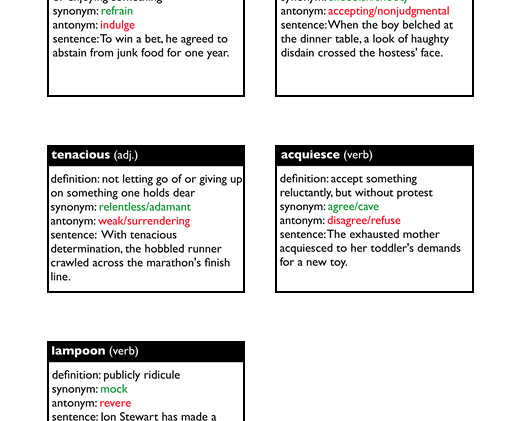Lindsey Hancock Warden
Summative Assessment
Reading literacy and comprehension make up the foundation of all of my classes, including social studies and science classes. With that in mind, assessing my students' mastery of English Language Arts standards is critical. I administer three types of English Language Arts summative assessments on an alternating, biweekly basis according to the skill we learned and worked on in the previous two weeks. These assessment results are tracked, both by overall mastery, and by mastery of individual skills, standards, or objectives.
Table of Contents
Assessing Reading Standards
Similar to my method for creating benchmark assessments, my biweekly reading assessments consist of cold-read passages and question stems that are equivalent to those found on my students' state standardized assessment. This prepares my students to master both my benchmark assessments and their state standardized assessment by familiarizing them with strategies for tackling specific question stems and for applying a learned skill to a cold-read passage.
In the biweekly test sample, adjacent, I assess seventh grade students over three different reading for literature skills. My students have an allotted amount of time, usually 45 minutes, to complete biweekly assessments such as this one. After each biweekly, my students and I spend time analyzing the data in order to engage in growth, monitor progress, and make decisions regarding future learning and outcomes.
In this artifact, a student completed a biweekly assessment I designed to measure proficiency in citing textual evidence and comparing and contrasting a fictional text to a historic account. The student has marked up some areas of the test with highlighter in order to ensure accuracy in his answers.
After receiving this assessment back with incorrect answers marked, the student was asked to engage in growth by considering his incorrect answers, and determining which skills he most needed to focus on. The student reflected in writing on the last page of this test, which is a common practice I ask all students to complete after a summative assessment. By considering their areas of growth and devising a plan or goal in order to help themselves grow, my students are applying assessments and data to their decision-making as learners.
Assessing Writing
An additional method of assessment that I use to assess writing is summative performance tasks where students must apply their knowledge of the reading skill that we have been working on to a performance writing prompt. For example, if we have studied theme in reading, the performance prompt will require students to read a passage and write about its theme. There are three types of writing I assess my students over: narrative writing, literary analysis, and argumentative writing. I score my students using the same rubric that they will be scored with on their state standardized assessment.
This artifact shows a sample of two fiction passages by the same author, a literary analysis performance writing task, and a tenth grade student response. The literary analysis performance task requires the student to write an essay that describes how the author uses characterization in the two passages to develop a common theme.
In her response, the student clearly states a theme, supports her opinion with textual evidence, and generally organizes the essay well. She scored a 95% on this performance writing task.
In this artifact, the same student responds to an argumentative performance writing task. This assessment demonstrates the use of nonfiction articles that provide competing claims about veganism. The student's task was to state and defend her own position on veganism after reading the two articles, and by using the two articles to support her own claims.
In her response, the student stated a claim in her thesis, and organized her essay around her three main reasons. This essay scored a 97% using our state and classroom rubric, which is pictured in the slideshow below.
In this final sample of summative writing assessment, I provided the student with a fiction passage, and a narrative writing task. The student was to read the passage and write a narrative story with a focus on describing the setting and characterization.
In this seventh grader's response, she uses some details from the passage to inform her creative story. This student response scored an 88%.
Please click on the slideshow below to learn how we apply rubric scoring to the writing assessments used in my classroom.
Assessing Vocabulary
Vocabulary assessment is very important method of assessment in my classroom. The Common Core State Standards for English Language Arts require students to determine the meaning of grade-level words under Language standards strand four at every grade level. I additionally recognize that my students need to master challenging vocabulary to prepare themselves for college entry assessments, as well as for college classes and the workforce. Thus, my students are given a set of five new vocabulary words each week, and assessed over their basic knowledge of the words the following week. Please click on the slideshow below to view how I assess vocabulary in my classroom.



